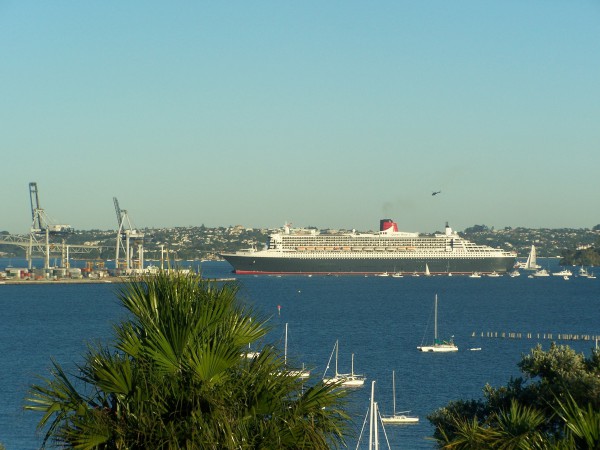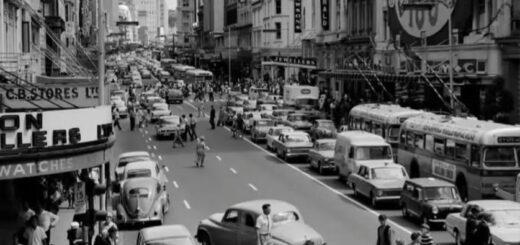Motukorea – Auckland’s forgotten gift – rediscovered
Motukorea or Browns Island (60 ha), the iconic inner-Gulf island, formed by a 10,000 year old extinct volcano, a sight familiar to all ferry users and yachties, was back in the news recently – but for all the wrong reasons.
Before Christmas a wildfire lit by a distressed woman, mysteriously marooned on the island trying to attract help, got out of control and burnt a substantial part of the island.
Motukorea was purchased by John Logan Campbell and his partner William Brown from the Ngati Tamaterā tribe in 1840. Campbell and Brown’s canvas tents, nikau whare and pig run were the modest beginnings of pākeha commercial activities in Tamaki – even before Auckland was founded; the ancestor if you will of the Auckland CBD.
After Campbell and Brown sold the island, (Campbell went to live in Parnell, his home Kilbryde overlooking the sea near present-day Dove Myer Robinson Park), it passed through a succession of owners, notably from 1906-1946, the Alison family of the Devonport Steam Ferry Company, at which time it became popular for ferry excursions and picnics. The hulks of some of those old paddle steamers still lay on the seabed on the western side of the island.
Then in 1931 sleepy Browns Island burst into the headlines. The reason: a controversial drainage scheme that would have seen the sewage of virtually the whole city pumped out to the island and after rudimentary treatment, discharged into the Hauraki Gulf.
The scheme was promoted by the Auckland Metropolitan Drainage Board and the Auckland City Council and backed by a host of technical experts. The banner of public opposition was first raised with a petition signed by 173 members of the Tamaki Ratepayers & Residents Association and 50 Waiheke Islanders (which must have been most of the island’s population). These early opponents were later joined by recreational boating fraternity – led by the Royal NZ Yacht Squadron. The Second World War slowed the scheme down but officialdom remained determined and with the end of the War in sight planning advanced apace.
The scheme’s opponents late in 1944 decided to form a specialized opposition body, ‘the Auckland and Suburban Drainage League’ with a previously unknown businessman Mr D.M. Robinson at its head. To cut a long story short, after 10 years of at times very bitter struggle, against the all odds, Robinson and his League won the day. They did so in the end by organizing to get Robinson and a team of his supporters elected onto the Metropolitan Drainage Board. Robinson then as chairman halted the scheme – but after contracts had been signed and the work begun! It is hard for Aucklanders today to appreciate the magnitude of this epic struggle of citizens versus officialdom.
Mr, then Sir, Dove Myer Robinson, ‘Robbie’, famously then went on to become six-times mayor of Auckland and the founding chairman of the Auckland Regional Authority (ARA) which later became the ARC. He is still revered as one of Auckland’s greatest civic leaders.
In 1955 his friend Sir Ernest Davis, the brewery magnate and a former mayor of Auckland himself, purchased and gifted Browns Island to – as the certificate-of-title states – ‘the Mayor, councillors and people of Auckland’.
In 1967 the City Council transferred the island’s management to the Hauraki Gulf Maritime Park Board. When the Maritime Park was abolished in 1990, the new Department of Conservation inherited management but not apparently the enthusiasm or priorities of the old Maritime Park Board. Auckland City Council paid DOC $15,000 a year to manage the place, which in turn out-sourced a minimum management regime to a private contractor. In 1995 as chairman of ARC regional parks committee I led a bid for the regional parks service to manage the island on behalf of the city council but DOC opposed the idea. In 2014 the government tried to include Motukorea in a Treaty of Waitangi settlement until I reminded the Council that the island was owned not by the Crown but (literally) the Council and the people of Auckland.
In November 2015 council officers recommended renewing DOC’s contract but Auckland councillors instead supported my amendment that Auckland Council resume direct management of the island.
Regrettably implementation of this decision was continually delayed by council management throughout 2016 – until the fire that is.
In November I inspected the island with council regional parks and biosecurity officers. The damage done was significant, thousands of native skinks burnt and thousands of dollars worth of fencing destroyed, but the evidence of decades of neglect and minimal management was even more dispiriting.
Thankfully the memorial cairn to Sir Ernest and Lady Davis’ great gift (and to Robbie’s great victory) still stands on the northern shore, though forlorn and neglected, their great generosity forgotten and the vision unfulfilled. But it appears the fire provided a sharp lesson for council officers and so did some good after all. Auckland Council will now assume direct management of the island on 2 February, hopefully the Whakanewha rangers will be involved. A group of volunteers is also being formed to assist in the restoration work. The decades of neglect of this marvelous gift are over. Browns Island – Motukorea –Browns Island – is to become Auckland’s lastest regional park – our first island regional park.




